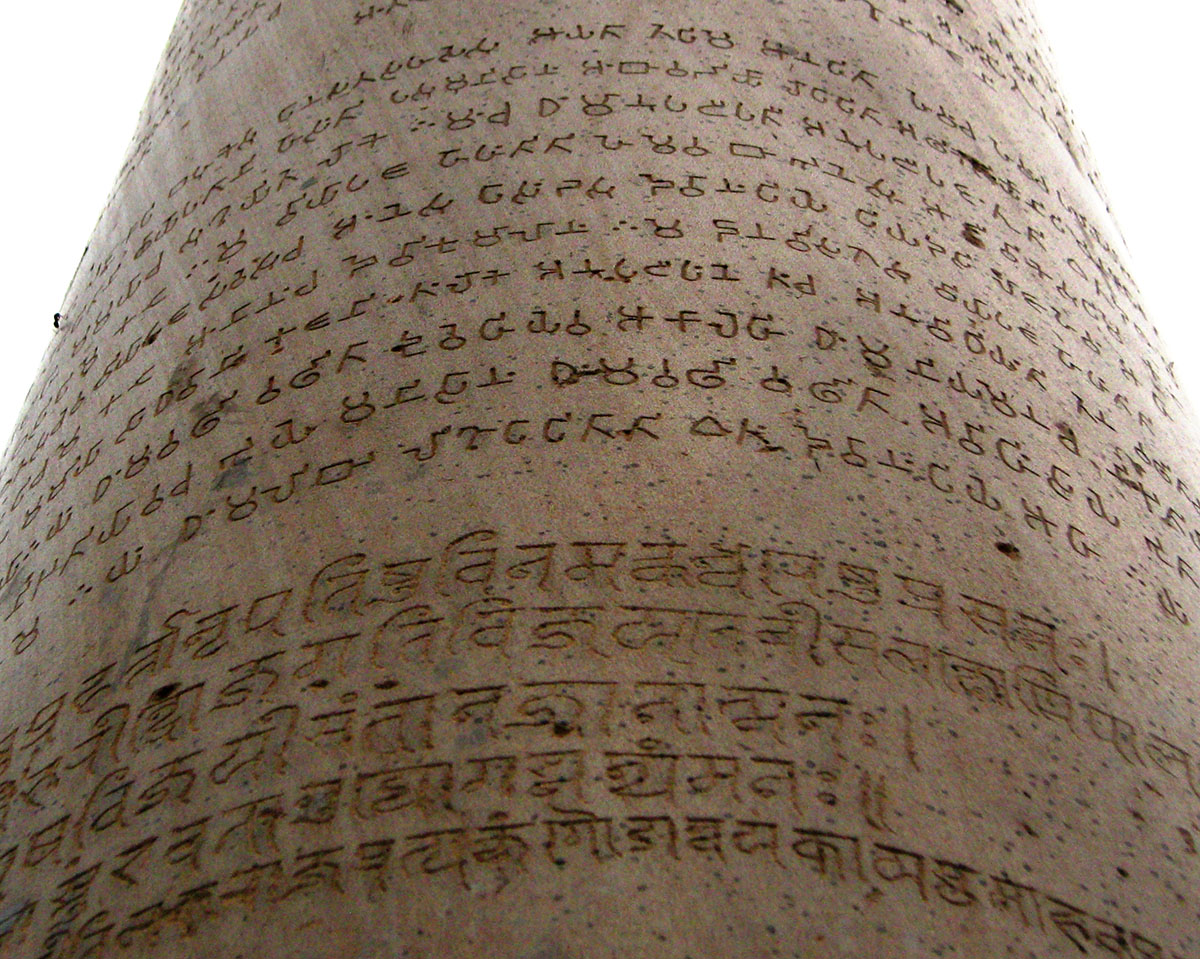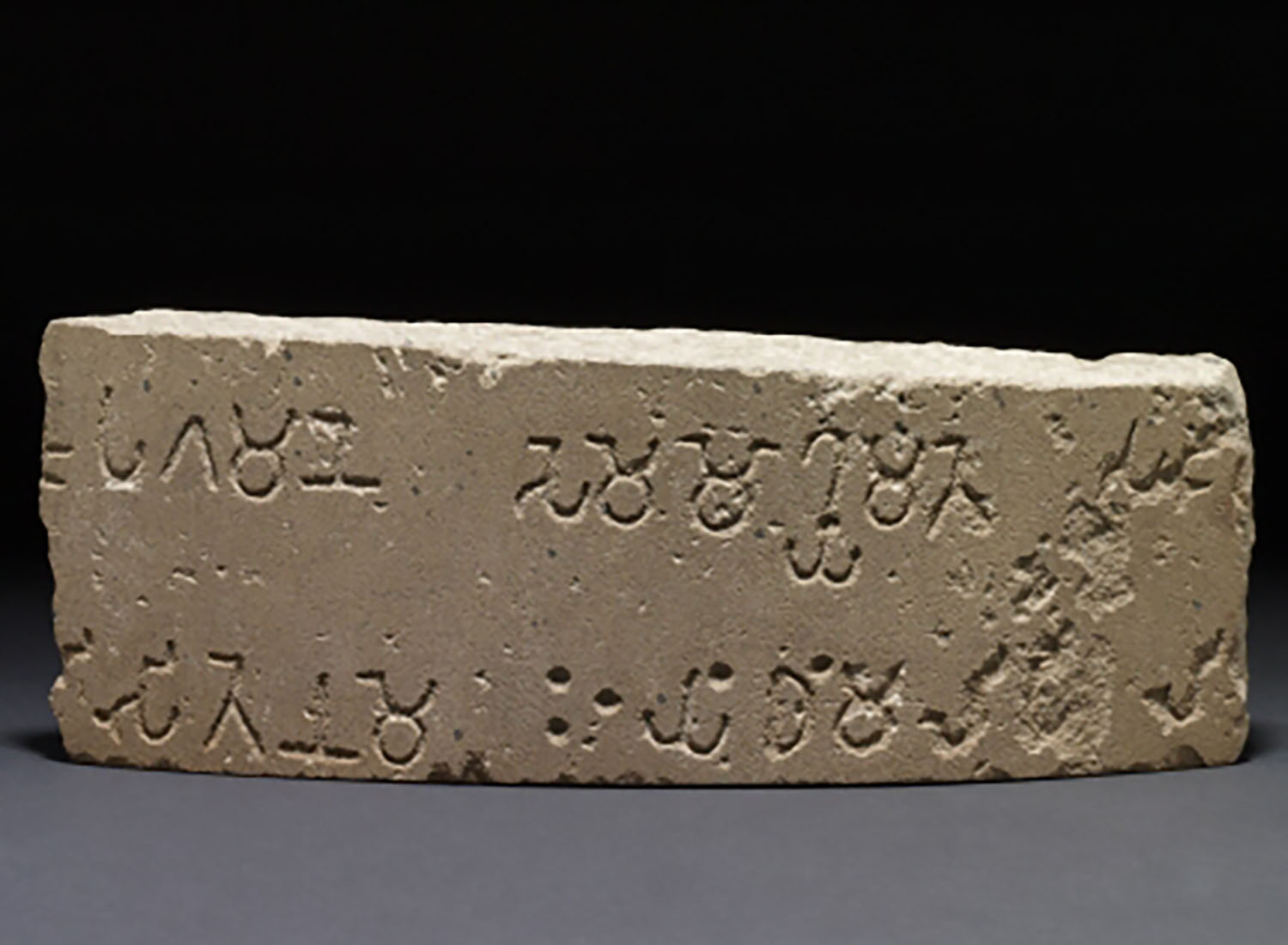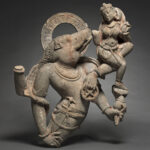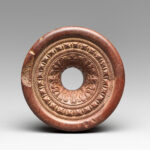Carved in rock and stone pillars, the edicts of Mauryan emperor Ashoka (r. 268-232 BCE) are the earliest epigraphs from the Indian subcontinent. The edicts are a set of inscriptions on rocks and pillars written in Ashokan Prakrit (using the Brahmi and Kharosthi scripts), Aramaic and Greek. The edicts are concerned with the ideas of Dhamma (Prakrit, loosely meaning “to uphold” in a Buddhist context), moral conduct and righteousness. The inscriptions detail the reforms enacted by Ashoka in the name of Dhamma, which include a more fair sentencing of prisoners, measures for animal conservation, upholding Buddhist principles and traditions, endorsing religious tolerance and cultural exchange, access to healthcare for humans and animals, and the establishment of the Dhamma Mahamatra (officers of Dhamma). The edicts also act as evidence of regional lifestyles, linguistic diversity within the Mauryan Empire, widespread literacy, and the infrastructure of the empire which allowed for the movement of the pillars, artisans, materials and the propagation of Ashoka’s message. The edicts are spread across the subcontinent, namely present-day Afghanistan, Pakistan, Nepal, Bangladesh and India. Ashoka’s edicts have been classified into the Minor and Major Rock Edicts, and the Minor and Major Pillar Edicts. The edicts are numbered according to their content, and a single edict may therefore recur in different locations, often close to the empire’s borders.
- Home
- Encyclopedia of Art
- Online Courses
- The MAP Academy & Nalli Fellowships
- Tangents
- Clusters
- Glossary
- About the MAP Academy
- What is Art History?
- Opportunities at the MAP Academy
- Partnerships
- Terms and Conditions

- Find us on instagram
Mask of Vaikuntha Vishnu, late 5th century. Learn more about 5th century masks
Designed by 










